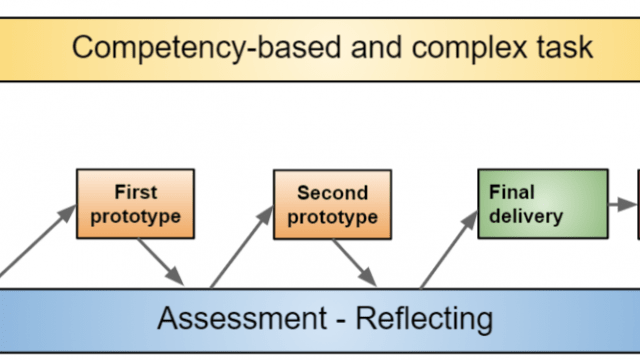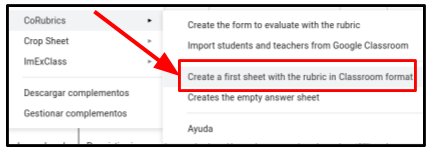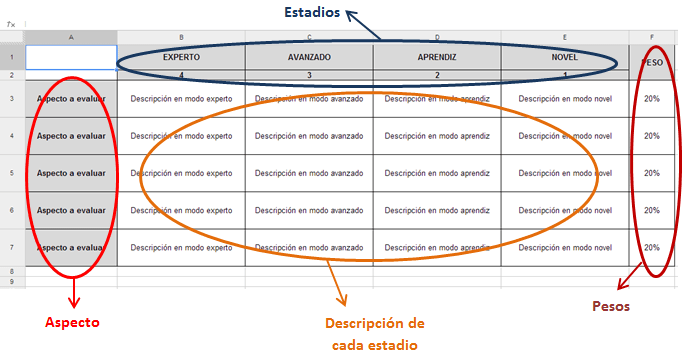For some time now, when I do trainings, I have been meeting teachers who want to reduce the grades in their subjects, but don’t really know how to do it. Since we opened the No Grades group on Facebook (not yet part of the group? There are already over 400 of us!), I get even more enquiries from teachers who are concerned about the over-reliance of students on grades.
Category: Rubrics
CoRubrics and Google Classroom rubrics
Recently, Google Classroom has added the ability to evaluate tasks with rubrics. At the moment, only the teacher can evaluate, but this is already a first step.
The student can consult the rubric before submitting it and, once the teacher has evaluated it, he or she can see this evaluation in the rubric.
Even more recently, Google has added the ability to import rubrics from a spreadsheet. We can then create our bank of rubrics and import them into the task at hand. The problem is in the format that Google uses for this information. In my opinion, it is a terrible format for a heading.
New CoRubrics functionality
Before doing a little holidays, which at the month we are perhaps it is already time, I present a new CoRubrics functionality that I had been asked on several occasions: the possibility of not making required the qualification of all aspects of the rubric.
Single-point rubric: Automate sharing with students
This course we have begun to use in a habitual way and more or less systematic the single-point rubrics. I speak in the plural because it is not only my own thing, but also that of the teachers of my school who work on projects in the 4th year of ESO.
For those of you who do not know single-point rubrics (here the link from where I knew them), they are nothing more than usual analytical rubrics, where only the expert level is indicated and, instead of evaluating by selecting a level, it is necessary to write down which points of each aspect must be improved to become an expert and which points are already correct. In the link you can see different models.
Next, one of the ones we use to evaluate the students’ portfolio.
Continue reading “Single-point rubric: Automate sharing with students”
Rubrics and formative evaluation
Many people still believe that evaluating with rubrics is formative evaluation and, in many cases, it is not. A rubric, in fact, provides clear criteria when evaluating a task. Now, this can be done so that the student detects his mistakes and his strong points and reflects on his learning (formative evaluation) or it can be done simply mechanically to grade tasks (summative or certifying evaluation).
I do not renounce either of the two, whether for formative evaluation or for summative evaluation, using rubrics is always positive. The student knows the criteria that will be used to evaluate a task. And that is always positive.
Now, since we use the rubrics, let’s use them making formative evaluation, that there are a thousand studies that show that it is one of the measures that most improves the learning of the students. And what exactly does it mean to make formative evaluation with rubrics?







